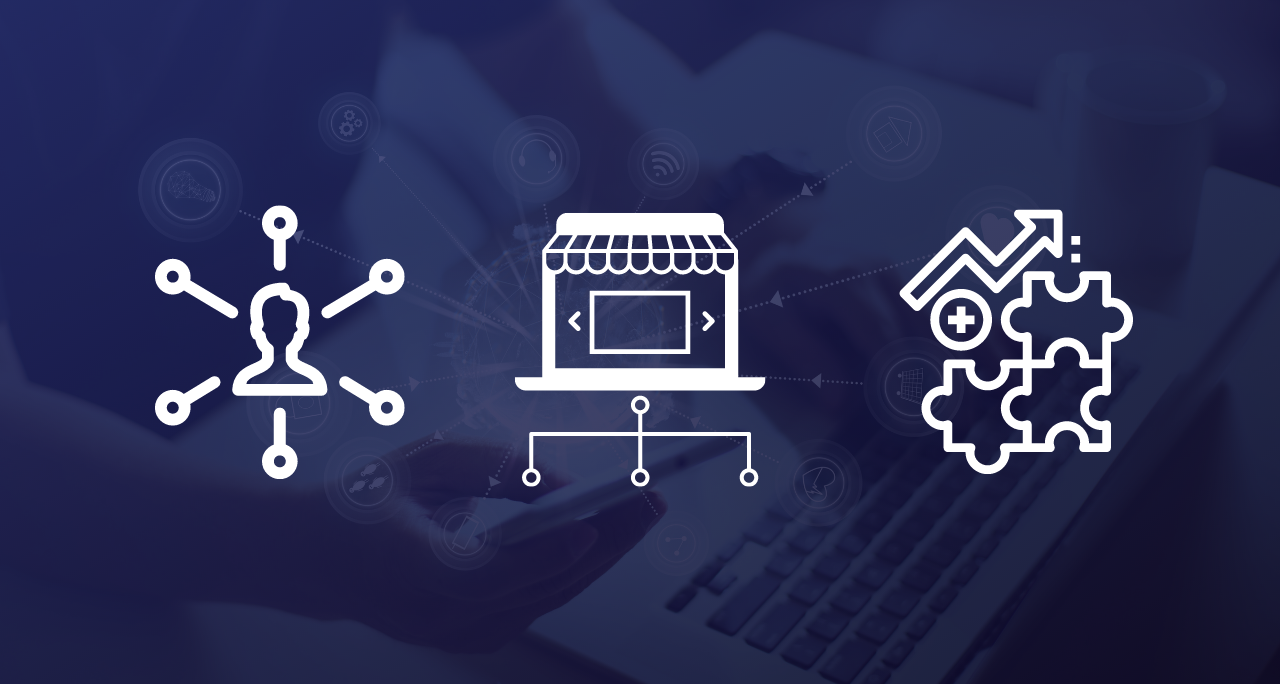The COVID-19 pandemic of 2020 brought resounding changes to the ways we all live—and shop—and as we near the end of 2021 it’s clear that the retail landscape has been altered forever. The bottom line, for better or for worse, is that businesses now need to think more seriously about investing in their omnichannel approach.
Omnichannel commerce is a multichannel approach to sales whose priority is to give customers a seamless experience – in terms of ordering process, messaging, goals, and design – no matter what device they’re using to shop and make purchase decisions.
Channels will include (but are in no way limited to) your website, your blog, social media and SMS, and yes, your brick-and-mortar store, all of which are connected and integrated. This mix leads to a better customer experience and increased sales and revenue in this new age of increasingly varied shopping options.
Here are just a few essential steps that can help you launch a successful omnichannel strategy that works for your brand.
Understand your customer
When you’re conducting lead generation, it’s important to use data you’ve gathered based on customer behavior to optimize your campaigns. You can segment your customers by demographics – gender, age, geo-location – their previous purchases or activities (what they get done with your product or service), and how engaged they’ve been (or not) with your brand. Knowing your target audience’s interests, behavior, and needs will go a long way towards success with your omnichannel approach.

Ask them questions, invite their feedback, and utilize social media and social listening tools strategically to get this useful data.
Choose the right channels and pick a focus for each
Where are your customers and what are they doing online? Which channel works best for interacting with your customers, and which is better for news updates or other content? Which channels are best for selling on? You will have to pick the channels where you’ll be communicating with clients, choose the ones where you’ll be selling, and decide on the channels where you’ll be offering support. As far as marketing channels go, three main channels are recommended, each with campaigns adapted to the platform’s style and user expectations.
Choose the right technology stack
Provide consistency across all touchpoints and channels—this requires a cohesive approach whether customers are purchasing online, reading reviews or product blogs on your website, seeing your ads on social media, or walking into your physical store. Think carefully about and plan for how each channel stands on its own, but how they might also lead to other channels, and ultimately lead to a purchase.
A solid customer data platform is key here, both from the point of view of collecting data from all channels, as well as pushing data into the right business applications – from eCommerce stores, ordering engines, to marketing automation and so on – and always having an up-to-date picture of your customers.
For this, be sure to choose a platform that is fit-for-purpose, flexible, and scalable enough so that it supports both your current needs, as well as growth needs that arise over time. In addition, given the rapid technological pace of development, opt for an innovative provider which will continually update their platform, keep up with tech advancements, and offer the latest functionalities available for digital commerce.

Implement omnichannel payments
As part of the tech stack, payments require a closer scrutiny. With an omnichannel payments solution you can integrate a single view of your customer’s interactions and have their payment data unified.
This involves using a single platform to process payments and pooling data from digital wallets, credit and debit cards, and card-not-present transactions, for example, to produce a more accurate representation of the client, and finetune your messages accordingly. This is turn helps update and make the customer experience more relevant, with a big potential to boost your conversion rates.
Shoppers themselves expect that paying for their purchase will be just as seamless across channels as their shopping experience. How can businesses make this happen?
Here are some things to consider:
Make sure you can accept multiple payment methods, including credit cards, debit cards (both card present and card-not-present scenarios), PayPal, mobile wallets like Apple Pay, or even cash/cash on delivery. Choice of accepted payment methods needs to be adapted for each market you’re selling into, as shoppers around the world have different preferences.
While your German shoppers will reach for their PayPal, Swedish buyers will favor Swish, US shoppers might choose Venmo, and Turkish users are likely to opt for their installment credit card. There are no one-size-fits-all in payments, and a true omnichannel approach will adapt the payment offering depending on the user’s market.
Payments is a dynamic field, so you also need to make sure that the payment methods included cover the latest market options and shoppers’ preferences. Modern alternatives, such as Buy Now, Pay Later (BNPL) – think Klarna, PayPal or Afterpay – are registering huge leaps in shopper adoption. In 2020, studies showed an increase of 50% of BNPL services versus the previous year, the largest increase registered among new eCommerce shoppers (62% growth in the 18 to 24-year-old segment, 98% increase in the 55+ segment).
In addition to new payment methods, existing payment options have also been observed to cross channels, a dynamic market merchants should stay on top of for a true omnichannel strategy.
Lately, digital wallets like Alipay or WeChat pay, a traditionally online payment method, are starting to be made available in-store. Installment payments, once a staple of brick-and-mortar retail, are now available for online checkouts. Pay-by-link services, initially an option for call centers, are starting to become available in luxury retail locations and in eCommerce chatbots. As shoppers cross channels they take their preferred payment methods with them and raise new processing expectations on the part of the merchant.
Finally, today’s fraud-rich commerce landscape calls for accepting secure payment methods and staying compliant with payment regulations. An omnichannel payments strategy, backed by a professional payments provider, will ensure the latest regulatory obligations are upheld and shoppers expectations are met in the process. NFC technology in- store and SCA compliance online are two other examples of the complexity of payments security to which you need to cater.

You will need to determine how you will accept payments, and you might need to obtain merchant accounts separately for each acceptance method or work with a processor that can offer an all-in-one payment processing solution. Add to this store credit, electronic gift card options, and so on, and the payments picture is (almost) complete.
Conclusion
The beauty of omnichannel in 2021 is clear. Not only does it enable brands to engage their customers at every touchpoint of the buying experience, but it also makes it possible to provide a truly relevant consumer experience.
When customers have a unified shopping experience across all channels—on your website, social media, in-store, through online marketplaces—they are more likely to make a purchase and they are more likely to come back for more. And post-COVID, the omnichannel approach is likely to be the new standard all businesses must rise to meet.
Discover how Verifone Omnichannel Commerce can help you create personalized customer experiences across all channels you’re selling on.





